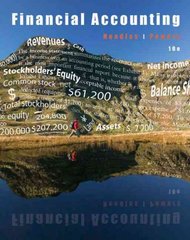
Dee's Forest Service Supplies is looking to expand its business. The new business is expected to generate $2.75 million per year in sales over the next 5 years. Annual costs would increase by $2.5 million. An investment in working capital of $90,000 would have to be made initially. The machinery (CCA rate of 30%) would cost $550,000, with additional costs of $45,000 to be incurred for setup and training. They also estimate that it would be possible to sell the equipment for 20% of its initial value at the end of 5 years. The company would set up operations in a building it does not use but currently rents out for $70,000 per year. If the firm's cost of capital is 13% and its marginal tax rate is 35%, should it proceed with this new business? 12 marks r= Tax Rate 13% 35% (685,000) $ Equipment cost Setup and training Investment in NWC A. Initial Investment 550,000 45,000 90,000 685,000 Summary Initial Investment $ PV of Cash Flows After Tax PV of CCA Tax Shield PV of Ending Cash Flows NPV Proceed with Project? $ Yr 2 3 Sales Less forgone rental Income Costs Project cash flows before tax | Project cash flows after tax 1 2,750,000 70,000 2,500,000 180,000 63,000 117,000 B.PV of Cash Flows After Tax C. PV of CCA tax shield formula (if asset class remains open after asset is sold) CdT 1+0.5r SAT 1 PV= (r+d. 1+rHtrtdl(1+r)" C = Capital Cost d = CCA rate for asset class T = Corporate tax rate r = cost of capital rate Salvage value Return of NWC Total ending cashflow D.PV of ending cash flows Why are interest and sunk costs not included but opportunity costs and externalities are included in the NPV approach to project analysis? 2 marks Dee's Forest Service Supplies is looking to expand its business. The new business is expected to generate $2.75 million per year in sales over the next 5 years. Annual costs would increase by $2.5 million. An investment in working capital of $90,000 would have to be made initially. The machinery (CCA rate of 30%) would cost $550,000, with additional costs of $45,000 to be incurred for setup and training. They also estimate that it would be possible to sell the equipment for 20% of its initial value at the end of 5 years. The company would set up operations in a building it does not use but currently rents out for $70,000 per year. If the firm's cost of capital is 13% and its marginal tax rate is 35%, should it proceed with this new business? 12 marks r= Tax Rate 13% 35% (685,000) $ Equipment cost Setup and training Investment in NWC A. Initial Investment 550,000 45,000 90,000 685,000 Summary Initial Investment $ PV of Cash Flows After Tax PV of CCA Tax Shield PV of Ending Cash Flows NPV Proceed with Project? $ Yr 2 3 Sales Less forgone rental Income Costs Project cash flows before tax | Project cash flows after tax 1 2,750,000 70,000 2,500,000 180,000 63,000 117,000 B.PV of Cash Flows After Tax C. PV of CCA tax shield formula (if asset class remains open after asset is sold) CdT 1+0.5r SAT 1 PV= (r+d. 1+rHtrtdl(1+r)" C = Capital Cost d = CCA rate for asset class T = Corporate tax rate r = cost of capital rate Salvage value Return of NWC Total ending cashflow D.PV of ending cash flows Why are interest and sunk costs not included but opportunity costs and externalities are included in the NPV approach to project analysis? 2 marks







